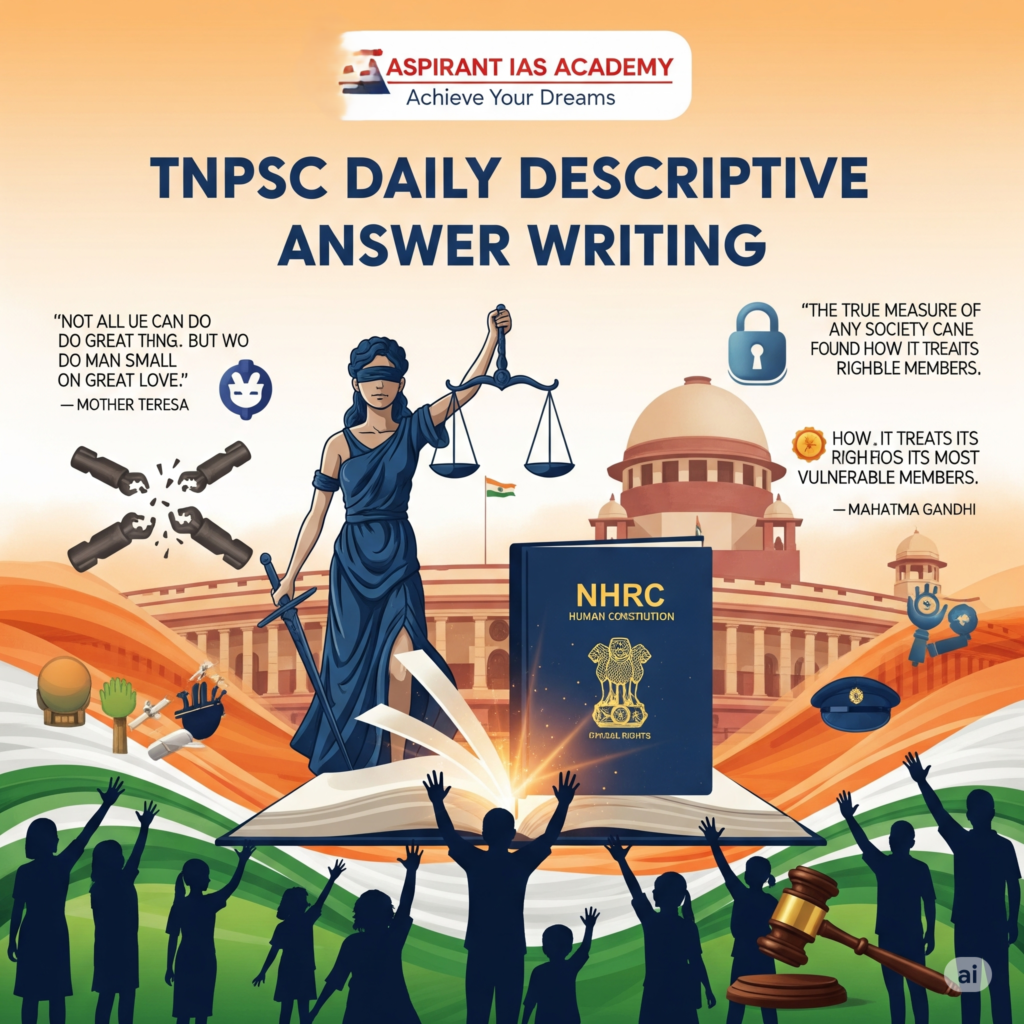
“Human rights are not a privilege conferred by government. They are every human being’s entitlement by virtue of his humanity” – Mother Teresa
I. Constitutional Mandate and Institutional Framework
NHRC Structure and Powers
- Establishment: Created under Protection of Human Rights Act, 1993 as statutory body
- Composition: Chairperson (former Chief Justice), judicial and non-judicial members ensuring multi-disciplinary approach
- Investigation Powers: Authority to investigate violations, summon officials, examine records and conduct inquiries
- Recommendatory Role: Powers to recommend compensation, policy changes, and administrative reforms
Core Functions
- Complaint Mechanism: Processing over 2 lakh complaints annually covering custodial deaths, encounter killings, torture
- Suo Moto Investigations: Proactive intervention in cases like Gujarat riots, Manipur violence, migrant workers’ crisis
- Human Rights Education: Training programs for police, judiciary, and civil society organizations
II. Achievements and Impact
Landmark Interventions
- Custodial Violence: Significant reduction in police torture cases through mandatory reporting mechanisms
- Women’s Rights: Guidelines for investigation of rape cases, protection of women in custody
- Vulnerable Groups: Special focus on Dalits, tribals, minorities through dedicated divisions
- Policy Recommendations: Compensation schemes for acid attack victims, guidelines for encounter deaths
“The ultimate tragedy is not the oppression by bad people but the silence of good people” – Dr. Martin Luther King Jr.
III. Limitations and Challenges
Structural Constraints
- Enforcement Limitations: Lack of punitive powers, recommendations often ignored by state governments
- Resource Deficiency: Inadequate staff, limited budget affecting investigation quality and timeliness
- Political Interference: Delayed appointments, government influence on sensitive cases
- Jurisdictional Gaps: Cannot investigate cases older than one year, limited powers over armed forces
Contemporary Challenges
- Implementation Deficit: Poor compliance rate of recommendations, lack of follow-up mechanisms
- Awareness Gap: Limited public knowledge about NHRC procedures and rights
- Digital Age Issues: Cyber crimes, privacy violations requiring updated mandates
IV. Strengthening Measures
Reform Recommendations
- Enhanced Powers: Granting prosecution powers, contempt jurisdiction for non-compliance
- Resource Augmentation: Increased funding, specialized investigation teams, technology upgradation
- Institutional Autonomy: Independent selection process, fixed tenure ensuring operational independence
- Collaborative Approach: Stronger coordination with state commissions, civil society partnerships
“A nation’s greatness is measured by how it treats its weakest members” – Mahatma Gandhi
Conclusion
While NHRC has emerged as crucial human rights watchdog with notable achievements in awareness creation and policy advocacy, its effectiveness remains constrained by limited enforcement powers and resource constraints. Comprehensive reforms enhancing autonomy, powers, and resources are essential for realizing its constitutional mandate of protecting human dignity and fundamental rights in democratic India.
